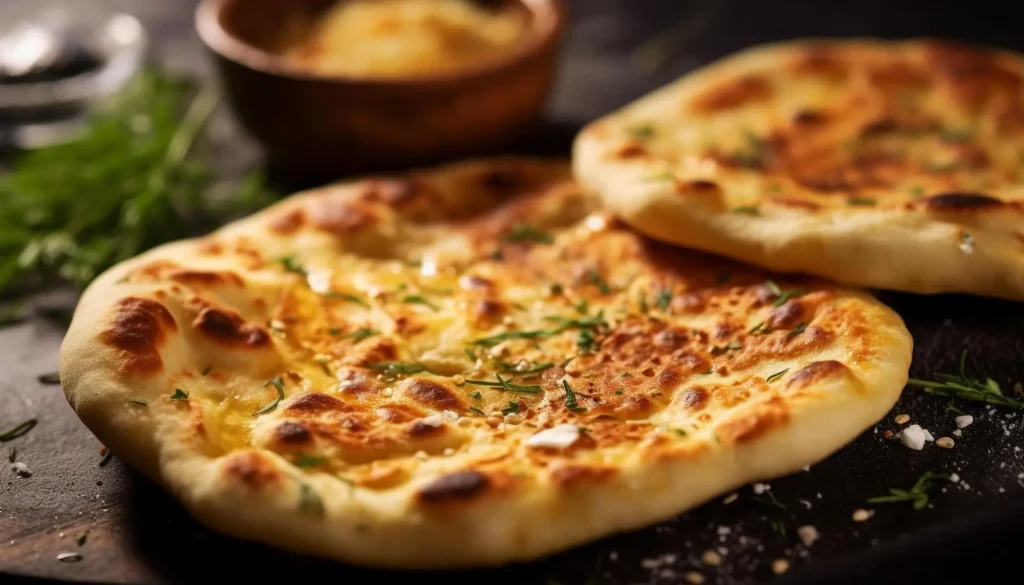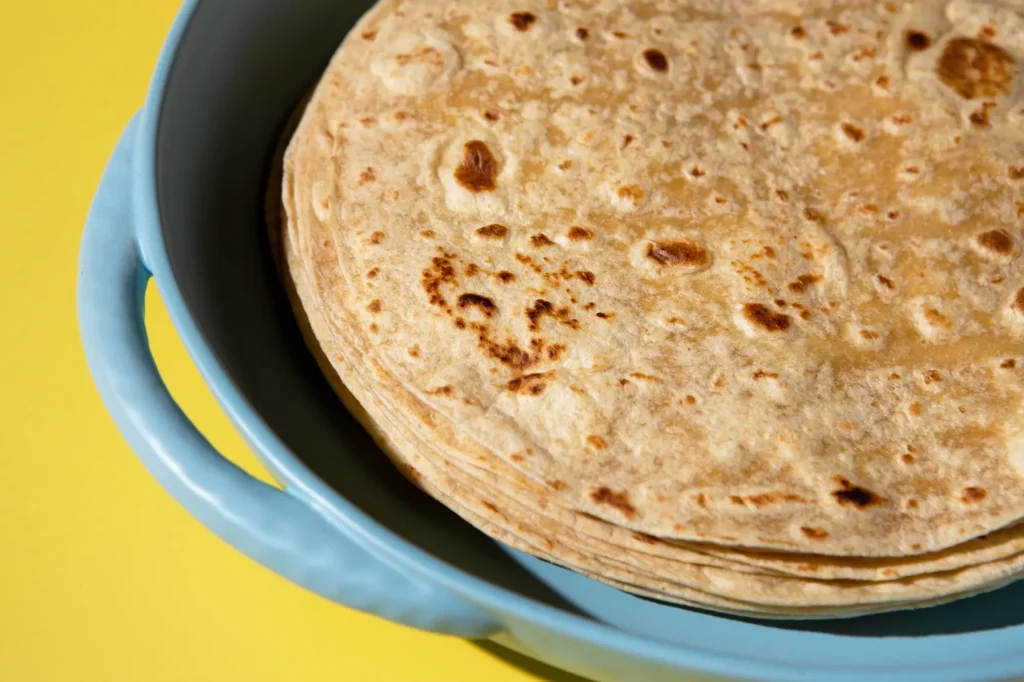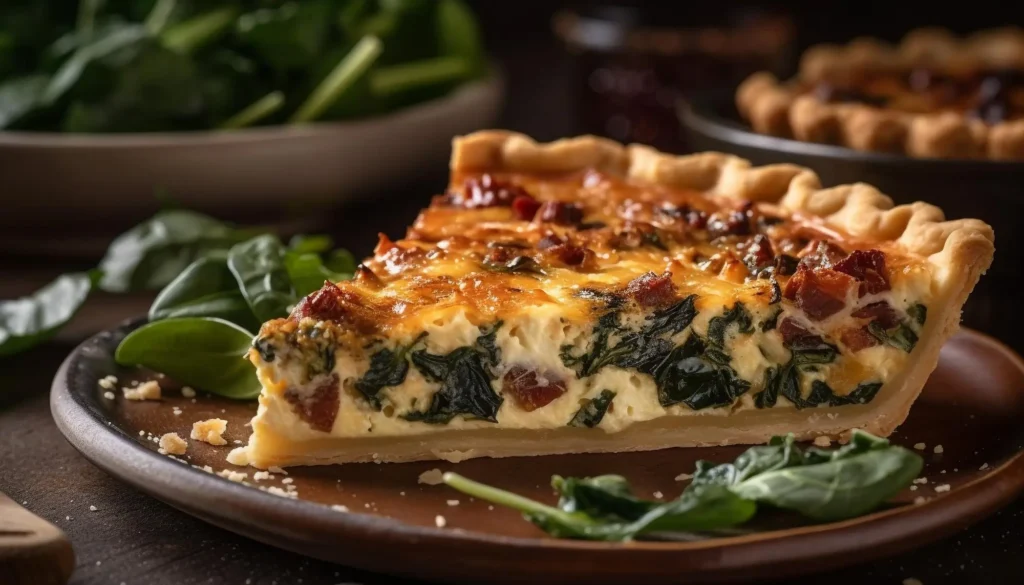Exploring the World of Yeast-Free Flatbread
In the realm of culinary delights, the simplicity and versatility of flatbread stand out, especially when it’s a yeast-free variant. This article delves into the enticing world of unleavened flatbread, a staple that’s gaining momentum in kitchens worldwide. Whether you’re a seasoned baker or a novice in the kitchen, the allure of quick flatbread is undeniable. It’s not just about the ease of preparation; it’s about embracing a healthier, more straightforward approach to bread-making.
Exploring the World of Yeast-Free Flatbread
Flatbread, in its essence, is a celebration of minimalism in baking. Traditionally reliant on yeast, modern adaptations have seen a shift towards yeast-free recipes. This transition isn’t just a nod to convenience but also a response to dietary preferences and restrictions. The unleavened flatbread isn’t a mere alternative; it’s a culinary revolution in its own right.
Moreover, the beauty of quick flatbread lies in its adaptability. Whether you’re whipping up a quick snack or complementing a lavish meal, the simplicity of easy flatbread recipes fits perfectly into any meal plan. It’s not just about cutting down preparation time; it’s about opening doors to creativity and personalization in your cooking.
The Growing Popularity of Unleavened Flatbread

The rise in popularity of no-yeast bread is a testament to the changing dynamics of food preferences and cooking styles. Health-conscious individuals are increasingly leaning towards simple flatbread recipes, appreciating their lower yeast content and the associated health benefits. Additionally, the ease of making homemade flatbread without yeast appeals to the fast-paced lifestyle of many, offering a quick yet nutritious solution to bread cravings.
Furthermore, the versatility of quick bread alternatives like yeastless bread and non-yeast flatbread has sparked a new wave of culinary experimentation. Home cooks and professional chefs alike are discovering the endless possibilities that these flatbreads offer, from traditional applications to innovative culinary creations.
In conclusion, the journey into the world of yeast-free flatbread is not just about learning a new recipe; it’s about embracing a lifestyle change. It’s about simplicity, health, and versatility converging to create something truly remarkable. Stay tuned as we dive deeper into the ingredients, variations, and cooking methods that make no-yeast bread a must-try in any kitchen.
Key Ingredients for Quick Flatbread
When it comes to crafting flatbread no yeast, the simplicity of the ingredients is key. Firstly, you’ll need a good quality all-purpose flour – the foundation of your flatbread. Additionally, baking powder steps in as the crucial leavening agent, replacing yeast and ensuring your flatbread still has that much-desired rise and fluffiness. Olive oil adds a subtle richness, enhancing the texture, while water binds everything together. It’s remarkable how these basic ingredients can transform into a delightful bread.
Moreover, the beauty of this recipe lies in its flexibility. For those seeking a healthier twist, whole wheat flour can be a great substitute, adding a nutty flavor and boosting the nutritional value. Similarly, for a touch of sweetness, a hint of maple syrup or honey can do wonders. The key is to balance the flavors to your liking, making your quick flatbread not just easy but also uniquely yours.
Variations and Substitutes in Easy Flatbread Recipes
Now, let’s talk about personalizing your flatbread no yeast. The basic recipe is like a canvas, ready for your creative touches. Herbs like rosemary or thyme can infuse a delightful aroma and taste, perfect for pairing with soups or salads. For those who enjoy a bit of spice, incorporating finely chopped jalapeños or a dash of cumin can add an exciting twist.
Suggested text: “For those interested in exploring sprouted breads as a yeast-free option, Food for Life’s Sprouted for Life™ Breads offer a range of choices.
Furthermore, if you’re catering to specific dietary needs, this recipe is incredibly accommodating. Gluten-free flour blends can be used for a gluten-free version, though this might slightly alter the texture. For a vegan variant, ensure your oil and any added sweeteners align with vegan standards. The versatility of this easy flatbread recipe makes it a fantastic option for almost any dietary preference.
For more vegetarian recipes that pair wonderfully with your flatbread, check out our comprehensive Vegetarian Cooking Guide
In essence, the world of no-yeast bread is full of possibilities. Whether you stick to the basics or experiment with flavors and ingredients, the outcome is always a delightful, homemade bread that’s sure to impress. Stay tuned as we next explore the step-by-step process of turning these simple ingredients into delicious flatbread no yeast.
A Step-by-Step Guide to Making No-Yeast Bread

Making flatbread no yeast is surprisingly straightforward, and the process is as rewarding as it is simple. Firstly, in a large mixing bowl, combine your flour, baking powder, and a pinch of salt. This blend forms the dry base of your flatbread. Next, create a well in the center and pour in the olive oil and water. This is where the magic begins – as you mix these ingredients, a soft dough starts to form.
Moreover, once your dough is ready, lightly flour your work surface and knead the dough for a few minutes. This step is crucial for developing the texture of your flatbread. After kneading, let the dough rest for about 10 minutes. This resting period allows the dough to relax, making it easier to shape.
Now, divide the dough into equal portions and roll each into a thin circle. The thickness of your flatbread can vary depending on your preference – thinner for a crispier texture, thicker for a softer bite. Then, heat a skillet over medium heat and cook each flatbread for a couple of minutes on each side. You’ll know they’re done when they puff up and sport a beautiful golden-brown hue.
Finally, wrap your cooked flatbreads in a clean cloth to keep them warm and soft until serving. This step also helps in retaining the moisture, ensuring your flatbread no yeast is as fluffy as possible.
Secrets to Perfect Simple Flatbread Every Time
Achieving perfection in making flatbread no yeast is all about mastering a few key techniques. Firstly, ensure your baking powder is fresh – it’s the secret to getting that perfect rise. Also, the temperature of the water matters; lukewarm water helps in creating a pliable dough.
Furthermore, don’t rush the cooking process. Cooking your flatbread on a medium heat allows it to cook through evenly without burning. If you’re aiming for a crispier edge, increase the heat slightly towards the end of cooking.
Another tip is to experiment with the thickness of your flatbreads. While some prefer a thinner, crisper texture, others might enjoy a thicker, softer bread. It’s all about finding what works best for you and your taste preferences.
In summary, making flatbread no yeast is an enjoyable and rewarding process. With these tips and tricks, you’re well on your way to creating delicious, homemade flatbread that’s sure to be a hit with family and friends. Stay tuned as we delve into the nutritional aspects of this delightful bread in the next section.
Health Advantages of Homemade Flatbread Without Yeast
Embarking on the journey of making flatbread no yeast at home comes with a plethora of health benefits. Firstly, by opting for a yeast-free recipe, you’re catering to those with yeast sensitivities or allergies, making it a more inclusive option. Additionally, this type of flatbread is often lower in calories and carbohydrates, aligning well with various dietary goals.
To understand more about the health benefits of yeast-free bread, particularly for managing Candida, read this insightful article from Food for Life.
Moreover, the absence of yeast in these flatbreads also means a shorter preparation time, as there’s no need for the dough to rise. This makes it a quicker, more convenient option without compromising on health. Plus, when you make flatbread at home, you have complete control over the ingredients, ensuring no unwanted additives or preservatives.
Nutritional Analysis of Quick Bread Alternative
When it comes to nutrition, flatbread no yeast is a winner. It’s not just about what’s missing (yeast), but also about what you can include. For instance, using whole wheat flour boosts the fiber content, which is great for digestive health. Olive oil, a key ingredient, is known for its heart-healthy fats.
Furthermore, homemade flatbread allows for the addition of nutrient-rich ingredients like seeds or nuts, enhancing its nutritional profile. This adaptability makes it a smart choice for those looking to maintain a balanced diet.
In essence, choosing to make flatbread no yeast is not just a culinary preference but a health-conscious decision. With its lower calorie count and potential for nutrient-packed variations, it’s a wholesome addition to any meal. Stay tuned as we explore creative serving ideas for this versatile bread in the next section.
To learn more about different grains and seeds that can enhance the nutritional value of your flatbread, check out this Grain & Seed Guide from Food for Life.
Innovative Serving Ideas for Yeastless Bread
When it comes to serving flatbread no yeast, the possibilities are as boundless as your imagination. Firstly, consider using it as a base for an array of toppings – from classic bruschetta to exotic Mediterranean spreads. This not only adds a burst of flavor but also transforms your flatbread into a gourmet experience.
Moreover, flatbread can be a perfect accompaniment to soups and stews. Its absorbent nature makes it ideal for sopping up delicious broths, enhancing your dining experience. Additionally, for a healthier twist, pair your flatbread with fresh salads; it adds a satisfying crunch and a wholesome balance to your meal.
Explore our Blueberry Lemon Cheesecake guide for a sweet twist to pair with your flatbread.
Best Dips and Spreads for Non-Yeast Flatbread
The versatility of flatbread no yeast extends to its pairing with dips and spreads. For a classic combination, hummus or tzatziki are excellent choices, offering a creamy texture and rich flavors. Alternatively, for those who enjoy a bit of heat, a spicy salsa or a savory chutney can be delightful.
Furthermore, consider experimenting with homemade spreads. A roasted garlic and herb butter or a sun-dried tomato pesto can elevate your flatbread to a whole new level. These combinations not only tantalize the taste buds but also make for an impressive presentation when entertaining guests.
In summary, flatbread no yeast serves as a versatile canvas for a variety of culinary creations. From simple pairings to elaborate toppings, it’s a fantastic way to add a creative touch to your meals. Stay tuned as we next delve into the best ways to store and preserve this delightful bread.
Preserving Your Unleavened Flatbread
Proper storage of flatbread no yeast is essential to maintain its freshness and flavor. Firstly, after cooling the flatbread, wrap it in aluminum foil or store it in an airtight container. This method helps to retain moisture, keeping the bread soft and pliable for a longer period.
Moreover, for short-term storage, keeping your flatbread at room temperature is ideal. It remains fresh for about 2-3 days, making it perfect for immediate consumption. Additionally, if you’ve made a larger batch, refrigerating your flatbread is a viable option, extending its shelf life to about a week.
Freezing and Reheating Your Quick Flatbread
When it comes to longer storage, freezing flatbread no yeast is an excellent solution. Firstly, separate the flatbreads with parchment paper and then place them in a freezer-safe bag. This prevents them from sticking together and makes it easier to thaw only what you need.
Furthermore, when you’re ready to enjoy your flatbread again, reheating is simple. You can either thaw it at room temperature or use a microwave or oven for a quicker result. A skillet on the stovetop also works well, especially if you prefer your flatbread slightly crispy.
In essence, with these storage and reheating tips, your flatbread no yeast can be a convenient and delicious option any day of the week. Stay tuned as we explore creative variations and flavors in the next section, adding even more versatility to this wonderful bread.
Transforming Yeast-Free Flatbread into Pizza Bases

One of the most exciting aspects of making flatbread no yeast is its versatility, particularly as a base for homemade pizzas. Firstly, the flatbread provides a perfect crust – thin, crispy on the edges, yet sturdy enough to hold your favorite toppings. Moreover, it’s a quicker alternative to traditional pizza dough, as there’s no waiting for the dough to rise.
Furthermore, you can get creative with the toppings. From classic margherita to more adventurous combinations like barbecue chicken or pear and gorgonzola, your flatbread pizza can be tailored to suit any palate. Additionally, for those with dietary restrictions, this is an excellent opportunity to use vegan cheeses or gluten-free toppings, ensuring everyone can enjoy a slice.
Experimenting with Flavors in No-Yeast Bread
The beauty of flatbread no yeast lies in its ability to adapt to a variety of flavors. Firstly, incorporating herbs like rosemary or thyme directly into the dough can infuse your flatbread with aromatic flavors. Moreover, adding spices such as cumin or paprika can give it a delightful warmth and depth.
Furthermore, for those who enjoy a sweet and savory combination, incorporating ingredients like olives, sun-dried tomatoes, or even a sprinkle of cinnamon can create a unique taste experience. Additionally, brushing the flatbread with garlic-infused oil before serving adds a flavorful twist that complements a wide range of dishes.
In summary, the possibilities with flatbread no yeast are endless. Whether you’re using it as a pizza base or experimenting with different flavors and ingredients, it’s a versatile and satisfying bread option that’s sure to delight. Stay tuned as we address some frequently asked questions in the next section, providing even more insights into this versatile bread.
Common Questions About Making and Enjoying Yeastless Bread
When it comes to making and enjoying flatbread no yeast, several questions often arise. Firstly, one of the most common inquiries is about the shelf life of this bread. Typically, when stored properly, it can last for 2-3 days at room temperature, making it a convenient option for meal planning.
Moreover, many wonder about the versatility of this bread in terms of dietary restrictions. Fortunately, flatbread no yeast can easily be adapted to suit gluten-free, vegan, or low-calorie diets, making it a versatile choice for various dietary needs. Additionally, for those looking to add more flavor, incorporating herbs, spices, or even cheese into the dough can create a delightful variation.
Furthermore, another frequent question is whether this flatbread can be used as a wrap. Indeed, when rolled thinly, it becomes pliable enough to hold various fillings, perfect for a quick and healthy lunch option. Additionally, experimenting with different flours, like whole wheat or spelt, can add nutritional value and change the texture to suit your preference.
In essence, flatbread no yeast is not just a simple bread alternative; it’s a gateway to a world of culinary creativity. With its ease of preparation and adaptability, it’s an excellent addition to any kitchen repertoire. Stay tuned as we wrap up our exploration of this versatile bread in the concluding section.
Discover a world of flatbread recipes in our Flatbread and Butter – Global Recipes section.

